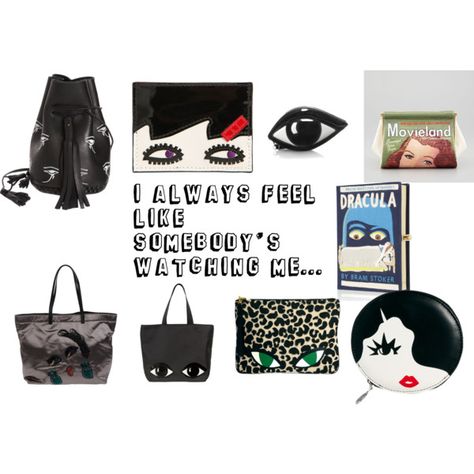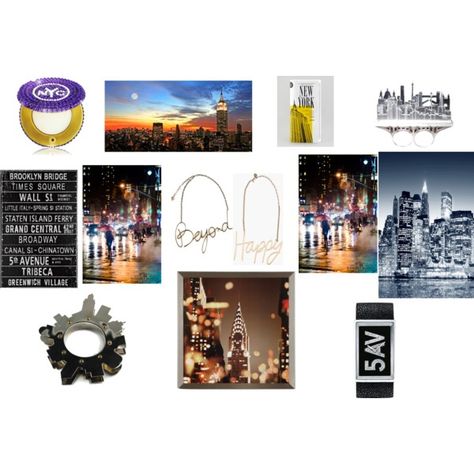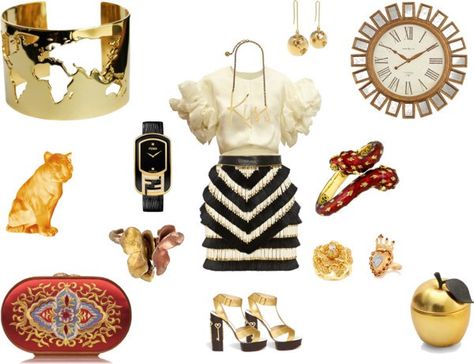Lulu Guinness clutches, handbag, and tote bag. Charlotte Olympia clutch. Olympia Le-Tan clutch. Lanvin tote bag.
Tag: Lanvin
My Home
Kiss Me
Jacket from Wolf & Badger. Balmain skirt. Charlotte Olympia platforms. Artelier by Nicole Miller earrings and cuff. Lanvin necklace. Gold bangle and diamond ring from 1stdibs. Dolce & Gabbana heart ring. Fendi watch. Katrin Langer clutch. Clock from Lamps Plus. Michael Aram candle. Lalique figurine.
Viva la Vida
A Year in Creative Directors

Published on Bold (bold.global) on August 16, 2016.
Starting with Donna Karan leaving DKNY in June 2015, and most recently with Raf Simons joining Calvin Klein, there has been an incredible amount of turnover of creative directors in high-end fashion. In many ways this is a response to trouble in the luxury sector. As new leadership tries to solve these problems, the industry is being remade in the process. Let’s take a look back.
June 2015 – Donna Karan Leaves Donna Karan International
Donna Karan stepped down as chief designer of Donna Karan International to focus more on her Urban Zen brand, a line of seasonless basics, jewelry, accessories, and home décor handmade by artisans in Haiti, Thailand, and Bali. Following her departure, DKI discontinued the Donna Karan Collection, DKNY C, and DKNY Jeans lines in favor of a stronger DKNY brand with a broader range of price points.
July 2015 – Alexander Wang Leaves Balenciaga
Alexander Wang left his role as creative director of Balenciaga after three years at the post. The move was a “joint decision”; Wang wanted to devote his focus on his namesake brand and bring on a new investor, and Balenciaga sales growth under Wang had been slower than that of similar brands.
October 2015 – Raf Simons Leaves Dior
Raf Simons, the artistic director of women’s haute couture, ready-to-wear, and accessories collections, left Dior after a three-and-a-half-year tenure. His decision had several components, including a chance to work more on his namesake menswear brand, the desire for a personal life in balance with his work life, a sense that Dior’s advertising image did not closely reflect his collections, and slowing retail sales.
Alber Elbaz Leaves Lanvin
Alber Elbaz left Lanvin after fourteen years as creative director, based on “the decision of the company’s majority shareholder”. The majority shareholder, publishing magnate Shaw-Lan Wang, had been the one to recruit Elbaz all those years ago. Yet last year they found themselves at odds over whether Lanvin should increase direct retail investment (Elbaz yes, Wang no), whether Lanvin should increase handbags investment (Elbaz yes, Wang no), and whether Wang should sell her shares to someone who might better develop the brand (Elbaz yes, Wang no). Elbaz departed with a letter of thanks, concluding with “I wish the house of Lanvin the future it deserves among the best French luxury brands” and signing with a heart.
Demna Gvasalia Joins Balenciaga
Demna Gvasalia, the cofounder and creative director of new streetwear label Vetements, was chosen to replace Alexander Wang as artistic director of Balenciaga. CEO Isabelle Guichot saw the renegade spirit of the brand’s founder, Cristóbal Balenciaga, in Gvasalia, a designer best known for marketing a plain t-shirt with the DHL logo and staging runway shows in a sex club and a Chinese restaurant. She also said that he would “definitely not” turn Balenciaga into a streetwear brand.
February 2016 – Stefano Pilati Leaves Ermenegildo Zegna
Stefano Pilati stepped down as the head of design at Ermenegildo Zegna Couture, stating only “I now wish to focus on other projects that I had put aside in order to achieve our common goals with Zegna Couture.” Founder Gildo Zegna praised the designer for making Ermenegildo Zegna “a show not to be missed in Milan”.
Alessandro Sartori Joins Ermenegildo Zegna
Alessandro Sartori was chosen to fill the new position of artistic director of Ermenegildo Zegna Group, a role with responsibility across all Zegna brands and creative functions. Sartori started a ready-to-wear division at Berluti and raised the brand’s revenue from €30 million in 2011, when he joined the company, up to €100 million. Yet before that, he spent eight years as the creative director of Z Zegna, the Ermenegildo Zegna diffusion line.
March 2016 – Hedi Slimane Leaves Saint Laurent
During his nearly four years as creative director of Yves Saint Laurent, Hedi Slimane revolutionized the brand. For one thing, its name was changed to “Saint Laurent” under his leadership. This move, ostensibly a mere replacement of “Saint Laurent Rive Gauche” for the ready-to-wear division, left many taken aback. For another thing, revenue rose from $385 million to $1.05 billion under Slimane’s tenure. The reasons for his departure are unknown, only that he and Kering failed to reach an agreement over his long-term contract. Many were left wondering how Saint Laurent, having become so transformed under Slimane, would move forward. Said Business of Fashion editor Tim Blanks, “I don’t think whoever goes into Saint Laurent will pick up where he left off…I think Hedi Slimane is such an obsessive, and I don’t think there are many other people with that degree of obsession.”
Ennio and Carlo Capasa Leave Costume National
The brothers who founded Costume National in 1986, Ennio and Carlo Capasa, departed at the same time. The brand, owned by investment bank Sequedge, had seen slow sales since November 2014, when the lower-priced C’N’C line was discontinued. It was with great sadness that the two left. Creative director Ennio said, “I was hoping this would not happen. I fought with passion…People say fashion is over, that marketing wins and that everything is an illusion. Definitely not for me.”
Justin O’Shea Joins Brioni
Justin O’Shea, the global fashion director of multi-brand ecommerce hub MyTheresa, was appointed creative director of Brioni following the departure of Brendan Mullane. Though O’Shea’s background was in buying and not design, he was seen as a promising creative director for his potential to create a strong image for Brioni across all of their channels. O’Shea is known for his sharp-edged, heavily tattooed appearance, and he started to move the traditional suiting brand in a rock direction by casting Metallica in his first ad campaign.
Bouchra Jarrar Joins Lanvin
Bouchra Jarrar, whose couture background includes Christian Lacroix and her own namesake label, was chosen as the new artistic director of women’s collections at Lanvin. Her position differs from that of Alber Elbaz in that she will focus only on womenswear. Jarrar, who has likened herself to founder Jeanne Lanvin, described her target customer as “Très real. The Lanvin woman has a real life,” and said she aims to “bring to Lanvin the harmony and consistency of a fashion designed for women, a fashion of our time.”
April 2016 – Francisco Costa and Italo Zucchelli Leave Calvin Klein Collection
Francisco Costa, the creative director of Calvin Klein Collection women’s, and Italo Zucchelli, creative director of men’s, stepped down, becoming the last to occupy those positions. “Collection is not a money maker,” said former CEO Tom Murry. “It’s a marketing expense and we generate an incredible amount of editorial that is based on being in that business.” Going forward, Calvin Klein, Calvin Klein Collection, ck Calvin Klein, and Calvin Klein Jeans would be managed by one creative director with one Calvin Klein vision.
Anthony Vaccarello Joins Saint Laurent
Anthony Vaccarello, creative director of both a namesake line and Versus Versace, withdrew from both brands completely to become creative director of Yves Saint Laurent. The name Saint Laurent, associated with Hedi Slimane’s tenure as creative director, was to stay. Yet in terms of imagery, the brand started with a clean slate. All photos from Slimane’s time were removed from Instagram, and in the interim before his first collection, Vaccarello released an ad campaign with no clothing at all.
May 2016 – Alessandra Facchinetti Leaves Tod’s
Creative director Alessandra Facchinetti left Tod’s after three years, saying only that she would “focus on other projects…put aside in order to be able to achieve Tod’s’ strategies.” A relatively short tenure was something she had in common with Alexander Wang, Raf Simons, and Hedi Slimane.
Danielle Sherman Leaves Edun
Danielle Sherman stepped down as creative director of Edun, also after three years. She was known for giving a high-fashion image to the socially conscious, artisanal brand founded by Bono and Ali Hewson.
Jonathan Saunders Joins Diane von Furstenberg
Jonathan Saunders closed his namesake brand and joined Diane von Furstenberg as chief creative officer. Diane von Furstenberg herself said, “I could not have found a cooler, more intelligent designer and I cannot wait to watch him shine as our chief creative officer”. Von Furstenberg did not retire, but Saunders’ appointment would give her more time for philanthropy and mentorship, especially as chairman of the Council of Fashion Designers of America (CFDA).
June 2016 – Hedi Slimane Sues Kering
And the plot thickens. Three months after his exit from Saint Laurent, Hedi Slimane sued the brand’s parent company, Kering, over the terms of his contract. Kering had removed the non-competition clause, meaning that Slimane could continue to design anything he wanted. However, Slimane wanted to have the non-competition obligation, and the financial compensation it would entail, reinstated.
July 2016 – Peter Copping Leaves Oscar de la Renta
Peter Copping left his position as creative director of Oscar de la Renta after less than two years at the company, stating that “personal circumstances require me to return to Europe.”
Haider Ackermann Joins Berluti
Haider Ackermann, who has his own line, was hired to replace Alessandro Sartori after Sartori replaced Stefano Pilati at Ermenegildo Zegna.
Maria Grazia Chiuri Joins Dior
Maria Grazia Chiuri, co-creative director of Valentino alongside Pierpaolo Piccioli, left the brand to become artistic director of Dior, the first female to hold that position. Chiuri and Piccioli were very successful in reinvigorating Valentino, expanding the accessories business and increasing profits. But Dior has a greater scale, with €5 billion in revenue last year to Valentino’s €256 million.
LVMH Sells Donna Karan International
A year after Donna Karan’s departure, Donna Karan International experienced another seismic change. LVMH Moët Hennessey Louis Vuitton, the parent company of DKI and some 70 other brands, sold the brand to G-III Apparel Group, a manufacturing and licensing company. The sale was initiated by G-III, who offered a valuation of $650 million – much higher than the $243 million LVMH had spent to purchase the brand from Donna Karan in 2001. “We had moved the pieces in the right direction and I think we were starting to move forward,” said LVMH fashion group CEO Pierre-Yves Roussel, “But [G-III] came with a very high price.” Still, Roussel genuinely feels that DKNY will be better off with G-III. In LVMH’s portfolio of luxury and contemporary brands, DKNY stuck out as a diffusion brand that required a different business model, one of wide wholesale reach as opposed to selective distribution and an emphasis on runway and editorial.
August 2016 – Raf Simons Joins Calvin Klein
Raf Simons joined Calvin Klein as chief creative officer. Simons’ minimalist aesthetic aligns with the Calvin Klein look, but his move is a bit surprising considering how he had spoken about the pressure placed on him at Dior and his desire for a better work-life balance. Regarding his position at Calvin Klein, Simons said, “Technically speaking, it works. Does it work for me emotionally? No, because I’m not the kind of person who likes to do things so fast.” Nevertheless, he is up to the challenge, conceding that spending more time on something does not always make it better. “Sometimes you can work things to death when you take too much time,” he said.
This frequent movement of creative directors is a sign of change across the luxury fashion sector. The omnipresence of social media, especially Instagram and Snapchat, demands that more news be shared at a faster rate to attract the same amount of attention. This has made staging new runway shows with eye-catching set design ever more important, fueling the need for more collections per year (pre-fall, fall, fall couture, men’s spring, spring, spring couture, resort, men’s fall…) The creative director cannot be simply a designer of garments, but a creator of a distinctive brand image, one that must constantly be maintained, and some, like Raf Simons and Ennio Capasa, seem to have caved under this pressure. As Simons has said, “Fashion became pop. I can’t make up my mind if that’s a good or a bad thing. The only thing I know is that it used to be elitist. And I don’t know if one should be ashamed or not to admit that maybe it was nicer when it was more elitist, not for everybody.” When brand building relies on visual stunts for Instagram, people like Demna Gvasalia and Justin O’Shea become the ideal type of creative director. Vetements always had superbly constructed clothing, like their handcrafted jeans made from reconstructed vintage pairs, but it was the satirical collections that put the brand on the map. Justin O’Shea has no formal design training, but he clearly has a strong visual instinct and has become a street style star on Instagram with 79,000 followers.
Another issue is that when many brands are controlled by one conglomerate, like LVMH or Kering, each brand is expected to be able to prove itself as a financial asset relative to the others. Donna Karan has said “I’m married to my company,” but LVMH is not married to DKNY. Alber Elbaz may have been an iconic designer, he may have been most responsible for making Lanvin the exquisite brand that it is today, but he was not the one who owned Lanvin. And of course in the financial world, it is not enough to be consistent – a brand must grow. Sustained growth as a luxury brand has become difficult in our time. Shoppers can easily look online and find the lowest prices available for a brand, and then wait for them to go lower. Many people choose to spend on experiences, from vacations to more restaurants, over fashion or any other material goods. The movement of creative directors, which has often been compared to a game of musical chairs, gives the signal that a brand is trying to update and improve.
The standard contract for a creative director is three years, and clearly these contracts are not always renewed. What this means is that a brand is not defined by its creative director; creative director is becoming more like just a job. Nicolas Ghesquière was the creative director of Balenciaga for 15 years. John Galliano was the creative director of Dior for 14 years. Tom Ford was the creative director of Gucci for 10 years, Frida Giannini for 9. Stefano Pilati was the creative director of Yves Saint Laurent for 8 years. And of course Alber Elbaz was the creative director of Lanvin for 14 years. Relationships like these are becoming few and far between, with brands less attached to a specific designer, and designers less allegiant to a specific brand, in an era where it might not make sense for anything to remain consistent for ten years anymore.
















































